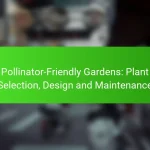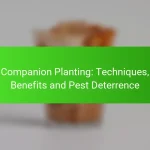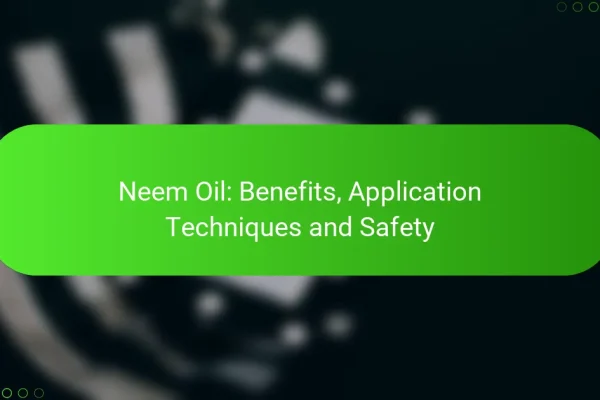What are effective pest management solutions in South Africa?
Effective pest management solutions in South Africa include a combination of strategies tailored to local conditions and pest types. These methods focus on minimizing pest damage while considering environmental and health impacts.
Integrated Pest Management (IPM)
Integrated Pest Management (IPM) is a holistic approach that combines various pest control methods to manage pest populations sustainably. It emphasizes monitoring pest levels, identifying pest species, and using a mix of biological, cultural, and chemical controls as needed.
In South Africa, IPM practices may include crop rotation, habitat manipulation, and the use of resistant plant varieties. This approach reduces reliance on chemical pesticides and promotes long-term pest control solutions.
Biological control methods
Biological control methods involve using natural predators, parasites, or pathogens to manage pest populations. For example, introducing ladybugs can help control aphid infestations in crops.
In South Africa, biological control is often favored due to its environmental benefits and low risk of pesticide resistance. Farmers can source beneficial insects from local suppliers or use microbial agents like Bacillus thuringiensis to target specific pests.
Chemical pesticides
Chemical pesticides are synthetic substances used to kill or repel pests. In South Africa, these products are regulated to ensure safety and efficacy. Farmers should choose pesticides that are specifically labeled for their target pests and follow application guidelines carefully.
While chemical pesticides can provide quick results, over-reliance can lead to resistance and harm beneficial organisms. It’s crucial to integrate them with other pest management strategies to maintain a balanced ecosystem.
Organic pest control options
Organic pest control options focus on natural substances and methods to manage pests without synthetic chemicals. Common organic solutions include neem oil, diatomaceous earth, and insecticidal soaps.
In South Africa, organic farming is gaining popularity, and many farmers are adopting these methods to meet consumer demand for chemical-free produce. However, organic options may require more frequent applications and careful monitoring to be effective.
Preventive measures
Preventive measures are essential for reducing pest infestations before they occur. These can include practices such as maintaining healthy soil, proper irrigation, and crop diversity to create a less favorable environment for pests.
Farmers in South Africa should also consider implementing physical barriers like nets or traps and regularly inspecting crops for early signs of pest activity. By focusing on prevention, they can minimize the need for more aggressive control measures later on.
How to choose the right pest control service?
Choosing the right pest control service involves evaluating their expertise, customer feedback, and service guarantees. Focus on providers with proven credentials, positive reviews, and solid warranties to ensure effective pest management.
Service provider credentials
Verify the credentials of pest control services by checking their licenses, certifications, and training. Look for companies that comply with local regulations and industry standards, as this indicates a commitment to quality and safety.
Consider whether the service uses environmentally friendly methods and products. Certifications from recognized organizations can also signify a higher level of professionalism and expertise.
Customer reviews and testimonials
Customer reviews and testimonials provide insight into the reliability and effectiveness of a pest control service. Look for feedback on platforms like Google, Yelp, or specialized home service websites to gauge overall satisfaction.
Pay attention to recurring themes in reviews, such as responsiveness, professionalism, and the success rate of pest elimination. A service with a high number of positive reviews is generally a safer choice.
Service guarantees and warranties
Service guarantees and warranties are crucial when selecting a pest control provider. A solid warranty indicates the company’s confidence in its services and offers peace of mind for customers.
Inquire about the specifics of any guarantees, such as the duration and conditions for service re-treatment. A reliable pest control service should be willing to address any issues that arise after treatment without additional costs.
What are common plant diseases in South Africa?
Common plant diseases in South Africa include fungal infections, bacterial diseases, and viral diseases, each posing unique challenges to agriculture and gardening. Understanding these diseases is crucial for effective management and prevention strategies.
Fungal infections
Fungal infections are prevalent in South Africa, affecting a wide range of crops and ornamental plants. Common examples include powdery mildew, rust, and root rot, which thrive in warm, humid conditions. These infections can lead to significant yield losses if not managed properly.
To control fungal infections, consider using resistant plant varieties, practicing crop rotation, and applying fungicides when necessary. Regular monitoring for early signs of infection can help mitigate damage and improve recovery chances.
Bacterial diseases
Bacterial diseases, such as bacterial wilt and soft rot, can severely impact plant health and productivity. These diseases often spread through contaminated water or tools, making sanitation practices essential in preventing outbreaks. Symptoms may include wilting, yellowing leaves, and foul odors from decaying tissues.
To manage bacterial diseases, ensure proper irrigation practices and avoid overhead watering, which can spread pathogens. Additionally, removing infected plants promptly can help limit the spread of bacteria to healthy plants.
Viral diseases
Viral diseases, including tobacco mosaic virus and cucumber mosaic virus, can cause stunted growth and reduced yields in affected plants. These viruses are typically transmitted by insects, such as aphids, or through contaminated tools and seeds. Early detection is crucial for effective management.
To prevent viral diseases, implement integrated pest management strategies to control insect vectors and use certified disease-free seeds. Regularly inspect plants for symptoms and remove any infected specimens to protect the surrounding crops.
How to identify pest infestations?
Identifying pest infestations involves recognizing specific signs of pest activity in your home or garden. Early detection is crucial to prevent extensive damage and control measures.
Signs of pest activity
Common signs of pest activity include droppings, gnaw marks, and unusual sounds. For example, rodent droppings are small and dark, while insect droppings may resemble tiny pellets or frass. Additionally, look for nests or burrows, which can indicate a larger infestation.
Another indicator is damage to plants or structures, such as chewed leaves or holes in walls. If you notice these signs, it’s essential to investigate further to confirm the presence of pests.
Common pest identification guides
Utilizing pest identification guides can significantly aid in recognizing specific pests. Many resources are available online, including websites and mobile apps that provide images and descriptions of common pests. These guides often categorize pests by type, such as insects, rodents, or fungi, making it easier to identify them.
Local extension services or pest control professionals can also offer valuable identification assistance. They may provide printed materials or workshops that focus on regional pests, helping you understand the specific challenges in your area.
What are the costs of pest management services?
The costs of pest management services can vary significantly based on factors such as the type of pest, the severity of the infestation, and the location. On average, homeowners can expect to pay anywhere from $100 to $500 for initial treatments, with ongoing services costing less per visit.
Average pricing in urban areas
In urban areas, pest management services typically range from $150 to $400 for initial inspections and treatments. The higher costs often reflect the increased demand and competition among service providers in densely populated regions.
Monthly maintenance plans may cost between $30 and $100, depending on the frequency of visits and the types of pests being managed. For example, services targeting rodents may be less expensive than those addressing termites or bed bugs, which require more specialized treatments.
When choosing a pest management service, consider obtaining multiple quotes and checking for customer reviews. This can help ensure you receive quality service at a fair price, while also identifying any potential hidden fees or long-term contracts that may not be immediately apparent.











